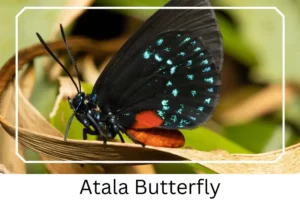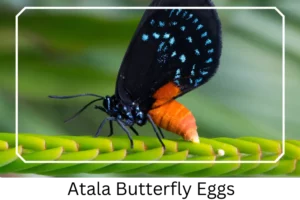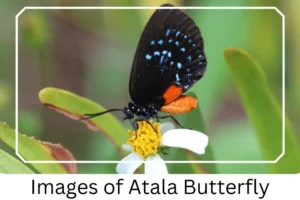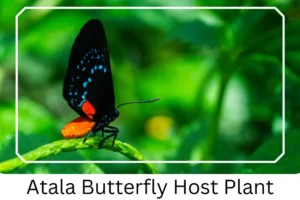Atala (Eumaeus atala)
The Atala butterfly, also known as the coontie hairstreak or simply the atala, is a visually striking species native to Florida, the Caribbean Islands, and other parts of the United States. This species, while once listed as endangered in Florida, has seen a resurgence thanks to conservation efforts and re-colonization attempts from the Bahaman population. The atala butterfly is not only a subject of beauty but also of ecological significance, playing a vital role in the biodiversity of its habitat.
Scientific Classification
- Family: Lycaenidae
- Genus: Eumaeus
- Scientific Name: Eumaeus atala
Overview
The atala butterfly’s lifecycle and behavior are fascinating, encompassing unique characteristics at each stage of its development from caterpillar to adult. These butterflies have adapted to a variety of habitats, showcasing remarkable resilience and adaptability. Their life cycle, dietary preferences, and breeding patterns offer insight into the complex interplay between species and their environment, underscoring the importance of preserving their natural habitats for future generations.
Description and Identification
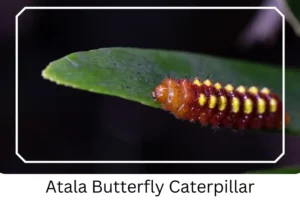
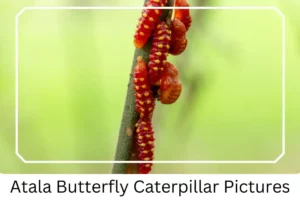 Caterpillar
Caterpillar
Newly hatched caterpillars are pale flesh-colored, evolving into a vivid red with two rows of yellow dots along their backs. This bright coloration serves as a warning to potential predators about their toxicity, acquired from their diet of cycad plants.
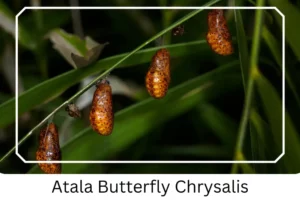 Pupa
Pupa
The chrysalis phase sees the atala butterfly pupa exhibiting a golden brown color with black spots during warmer seasons, shifting to a darker brown with black spots in colder months. This variation helps in camouflaging the pupa against predators.
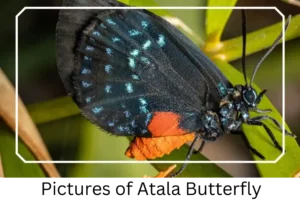 Adult Butterfly
Adult Butterfly
Sexual Dimorphism: There is a slight difference in size between genders, with males being marginally smaller than females.
Color and Appearance: The outer surface of their wings, in a folded position, is black with rows of brilliant blue or teal iridescent spots. A distinct bright red or orange blotch is visible on the lower middle portion of the wing and the lower part of the torso. In a spread-out position, males display an iridescent teal or Caribbean blue inner wing surface in colder and warmer seasons, respectively, while females boast royal blue markings on their forewings.
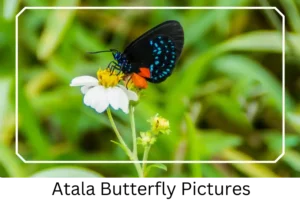
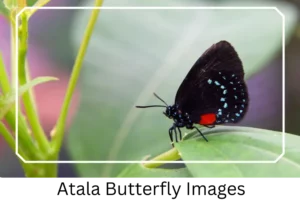 Average Wingspan: Ranges from 1.5 to 2 inches.
Average Wingspan: Ranges from 1.5 to 2 inches.
Flight Pattern: Their flight is slow and resembles that of a moth, making them unique among butterflies.
Quick Facts | |
| Distribution | Primarily found in Florida, Cuba, and the Bahamas. |
| Habitat | Prefers tropical open woodlands, grasslands, gardens, and shrub areas. |
| Lifespan of Adults | Ranges from 3 weeks to 3 months. |
| Breeding Season | Occurs throughout the year, with a preference for warmer climates. |
| Host Plants | Relies on Coontie (Zamia pumila) and certain Cycadaceae family plants. |
| Adult Diet | Feeds on the nectar of flowers like periwinkle, lantana, wild coffee, and shepherd’s needle. |
How to Identify Atala Butterfly?
Identifying an atala butterfly involves looking for specific markers unique to this species. Key identifiers include the bright red and orange markings on both the caterpillar and adult butterfly, which serve as a warning to predators about their toxicity. The adult butterfly’s iridescent blue or teal spots on a predominantly black wing surface are also distinctive. When observing these butterflies, note the slow, moth-like flight pattern and the size range of their wingspan, which can help differentiate them from similar species. The presence of atala butterflies often indicates the nearby presence of coontie plants, their primary host and food source during the larval stage.
Did You Know?
- Each individual’s iridescent wing markings are unique, akin to a fingerprint, providing a stunning display of nature’s diversity.
- The species name “atala” is inspired by the literary character Atala, an Indian princess from François-René de Chateaubriand’s novel, symbolizing the butterfly’s elegance and resilience.
- The caterpillar’s consumption of toxic cycad plants not only protects them from predators but also contributes to the control of these plants’ populations, showcasing an intricate ecological balance.
Conclusion
The atala butterfly, with its remarkable beauty and intriguing lifecycle, is a symbol of nature’s resilience and complexity. Its conservation success story highlights the importance of habitat preservation and ecological awareness. By understanding and appreciating the atala butterfly, we can take a step closer to ensuring the sustainability of our planet’s biodiversity for generations to come.

